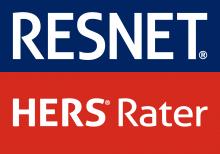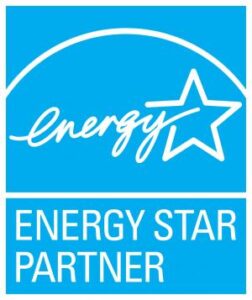New homeowners have a lot of factors to consider when purchasing a house— neighborhood, schools, commute, price and square footage. One factor that’s often overlooked is a property’s energy efficiency. Even though most first home buyers conduct a home inspection, your home’s energy performance may not come up. How your new home performs can dramatically affect your monthly energy bills, your comfort, and even your health!
That’s why it’s a good idea to include an assessment of your prospective property’s energy performance. The experts at The Fifth Fuel have prioritized residential energy management to ensure your home is comfortable and efficient. Here are 5 tips to consider when purchasing a new home to avoid unpleasant and costly surprises in the form of major home updates.
1. Start with a Home Inspection
A comprehensive home inspection will likely identify potential problem areas in a home. As part of an overall inspection, the qualified home inspector will visually inspect many areas that can affect how comfortable your new home will be, including:
-
Insulation in the attic, crawl spaces, and walls
-
Visible gaps in exterior and interior walls and ceilings
-
Aging or poorly maintained HVAC systems
-
Excess moisture or humidity
A general home inspection may not provide all the necessary details to help you evaluate your home’s energy efficiency. That’s where the energy pros at The Fifth Fuel can help! Our free home energy evaluation can help you understand your home’s inspection report. We can pinpoint potential efficiency problems that can impact your wallet and your health. If needed, a more complete home energy audit can identify where you can save thousands of dollars, improve comfort and protect your new home investment.
2. Check Your Insulation
Assessing the insulation is one of the first steps in determining how comfortable your house will be. The Fifth Fuel energy efficiency pro will first conduct a visual inspection in areas where insulation is accessible. He’ll be on the lookout for damp or moldy insulation, inadequate coverage, and any damage from pests. The inspection will include the attic, crawlspace and/or basement. Replacing or upgrading insulation can improve your home’s comfort all year long!
3. Pinpoint Air Leakage
Another essential component in improving home performance is scanning your home’s interior with an infrared camera. This tool will spot places where air leakage is occurring in walls, ceilings and other areas, Leaks appear on the digital readout as different thermal colors where cooler or warmer outside air is drawn in. Most homes will see the biggest benefits from a combination of air sealing these leaky gaps and upgrading insulation. Common areas of leakage include: penetrations in the exterior walls, ceiling light fixtures, and where walls and ceilings meet. Using these infrared camera scans as a map, we can properly seal gaps and cracks where your valuable conditioned air is leaking out.
Once the air sealing and insulation is installed, the team from The Fifth Fuel will conduct a blower door test to ensure your home is properly sealed and insulated.. A powerful fan is placed in a sealed exterior doorway. When activated, the blower door fan blows interior air outside and lowers the air pressure inside the house. While the blower door operates, the Fifth Fuel auditor will re-scan your house with the infrared digital camera to ensure all is sealed and properly insulated.
4. Inspect Crawl Spaces for Excess Moisture
With hot humid summers, many Metro DC and Maryland area homes experience excess moisture and dampness. Often the source of mold and mildew in the living spaces are these areas under the home. Over time, mold and moisture can cause damage to the structure and insulation of your home. Even worse, a build-up of mold and humidity can adversely affect your family’s health and make your home smelly and uncomfortable. Your Fifth Fuel energy auditor can review your crawl space and, if necessary, recommend encapsulation to control moisture under and inside the home.
5. Check for Leaky Ductwork
Another component of an energy audit is inspecting heating and cooling ductwork for leaks. A duct blaster test is typically used to detect where ducts may need to be sealed. Leaky ducts can increase energy bills because the ducts don’t deliver enough conditioned air where it is supposed to go. Leaky ducts may also affect indoor air quality, by sucking up and spreading allergens, dust mites, bacteria and other contaminants. Sealing ductwork is an effective way to improve efficiency in your HVAC system and improve indoor air quality..
Negotiate with Energy Efficiency in Mind
A great benefit of including an energy efficiency inspection before finalizing your contract is the ability to negotiate price adjustments to improve your home’s efficiency from the first day. You’ll have a comprehensive report in hand with prioritized recommendations and pricing should you wish to address insulation or air sealing improvements before finalizing your contract.






